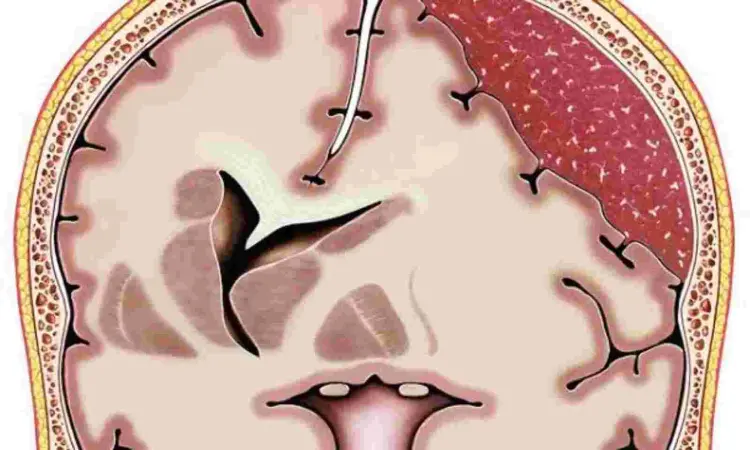- Home
- Medical news & Guidelines
- Anesthesiology
- Cardiology and CTVS
- Critical Care
- Dentistry
- Dermatology
- Diabetes and Endocrinology
- ENT
- Gastroenterology
- Medicine
- Nephrology
- Neurology
- Obstretics-Gynaecology
- Oncology
- Ophthalmology
- Orthopaedics
- Pediatrics-Neonatology
- Psychiatry
- Pulmonology
- Radiology
- Surgery
- Urology
- Laboratory Medicine
- Diet
- Nursing
- Paramedical
- Physiotherapy
- Health news
- Fact Check
- Bone Health Fact Check
- Brain Health Fact Check
- Cancer Related Fact Check
- Child Care Fact Check
- Dental and oral health fact check
- Diabetes and metabolic health fact check
- Diet and Nutrition Fact Check
- Eye and ENT Care Fact Check
- Fitness fact check
- Gut health fact check
- Heart health fact check
- Kidney health fact check
- Medical education fact check
- Men's health fact check
- Respiratory fact check
- Skin and hair care fact check
- Vaccine and Immunization fact check
- Women's health fact check
- AYUSH
- State News
- Andaman and Nicobar Islands
- Andhra Pradesh
- Arunachal Pradesh
- Assam
- Bihar
- Chandigarh
- Chattisgarh
- Dadra and Nagar Haveli
- Daman and Diu
- Delhi
- Goa
- Gujarat
- Haryana
- Himachal Pradesh
- Jammu & Kashmir
- Jharkhand
- Karnataka
- Kerala
- Ladakh
- Lakshadweep
- Madhya Pradesh
- Maharashtra
- Manipur
- Meghalaya
- Mizoram
- Nagaland
- Odisha
- Puducherry
- Punjab
- Rajasthan
- Sikkim
- Tamil Nadu
- Telangana
- Tripura
- Uttar Pradesh
- Uttrakhand
- West Bengal
- Medical Education
- Industry
Subdural Irrigation Critical in Chronic Subdural Hematoma Treatment: Lancet

A recent FINISH trial published in the The Lancet provided new insights into the treatment of chronic subdural hematoma (CSDH) which is a common intracranial emergency requiring surgical intervention. The trial was conducted across five neurosurgical units in Finland and brought into focus the significance of subdural irrigation during burr-hole drainage surgery.
Chronic subdural hematoma is typically treated by drilling a burr hole to access the hematoma which is followed by irrigation of the subdural space and insertion of a subdural drain. While the benefits of using a subdural drain have been well-documented, the therapeutic effect of subdural irrigation was not previously evaluated in a meticulous manner.
From January 2020 to August 2022, the FINISH trial enrolled a total of 589 patients out of 1644 assessed to determine if the addition of irrigation provided a significant advantage. The patients were randomly assigned to undergo burr-hole drainage either with or without subdural irrigation. The primary focus was on the reoperation rate within six months, while secondary outcomes included functional outcomes and mortality rates.
The study found that the reoperation rate was markedly higher in patients who did not receive irrigation. Also, 18.3% of the non-irrigation group required reoperation when compared to 12.6% in the irrigation group by highlighting a difference of 6.0 percentage points. Although the trial set out to establish non-inferiority of the no-irrigation approach, the outcomes did not support this hypothesis. There were no significant differences in functional outcomes or mortality rates between the two groups, indicating that while irrigation may reduce the need for reoperation, it does not affect overall survival or functional recovery.
The detailed findings revealed that severe adverse events, including systemic infections, intracranial hemorrhage and epileptic seizures were reported in both groups at comparable rates. This suggests that while subdural irrigation enhances reoperation rates, it does not increase the risk of serious complications.
The evidence from the FINISH trial strongly supports the continued use of subdural irrigation during burr-hole drainage surgery for chronic subdural hematoma. Given the higher reoperation rate associated with the absence of irrigation, the study underlines the importance of this procedure in improving the surgical outcomes.
With a robust sample size and rigorous methodology, this research ensures that the results are reliable and applicable to a broad patient population. The findings advocate for standardizing subdural irrigation as part of the burr-hole drainage procedure that can potentially lead to better patient outcomes and reduced healthcare costs associated with reoperations.
Source:
Raj, R., Tommiska, P., Koivisto, T., Leinonen, V., Danner, N., Posti, J. P., Laukka, D., Luoto, T., Rauhala, M., Tetri, S., Korhonen, T. K., Satopää, J., Kivisaari, R., Luostarinen, T., Schwartz, C., Czuba, T., Taimela, S., Lönnrot, K., Järvinen, T. L. N., … Zeiler, F. A. (2024). Burr-hole drainage with or without irrigation for chronic subdural haematoma (FINISH): a Finnish, nationwide, parallel-group, multicentre, randomised, controlled, non-inferiority trial. In The Lancet. Elsevier BV. https://doi.org/10.1016/s0140-6736(24)00686-x
Neuroscience Masters graduate
Jacinthlyn Sylvia, a Neuroscience Master's graduate from Chennai has worked extensively in deciphering the neurobiology of cognition and motor control in aging. She also has spread-out exposure to Neurosurgery from her Bachelor’s. She is currently involved in active Neuro-Oncology research. She is an upcoming neuroscientist with a fiery passion for writing. Her news cover at Medical Dialogues feature recent discoveries and updates from the healthcare and biomedical research fields. She can be reached at editorial@medicaldialogues.in
Dr Kamal Kant Kohli-MBBS, DTCD- a chest specialist with more than 30 years of practice and a flair for writing clinical articles, Dr Kamal Kant Kohli joined Medical Dialogues as a Chief Editor of Medical News. Besides writing articles, as an editor, he proofreads and verifies all the medical content published on Medical Dialogues including those coming from journals, studies,medical conferences,guidelines etc. Email: drkohli@medicaldialogues.in. Contact no. 011-43720751


